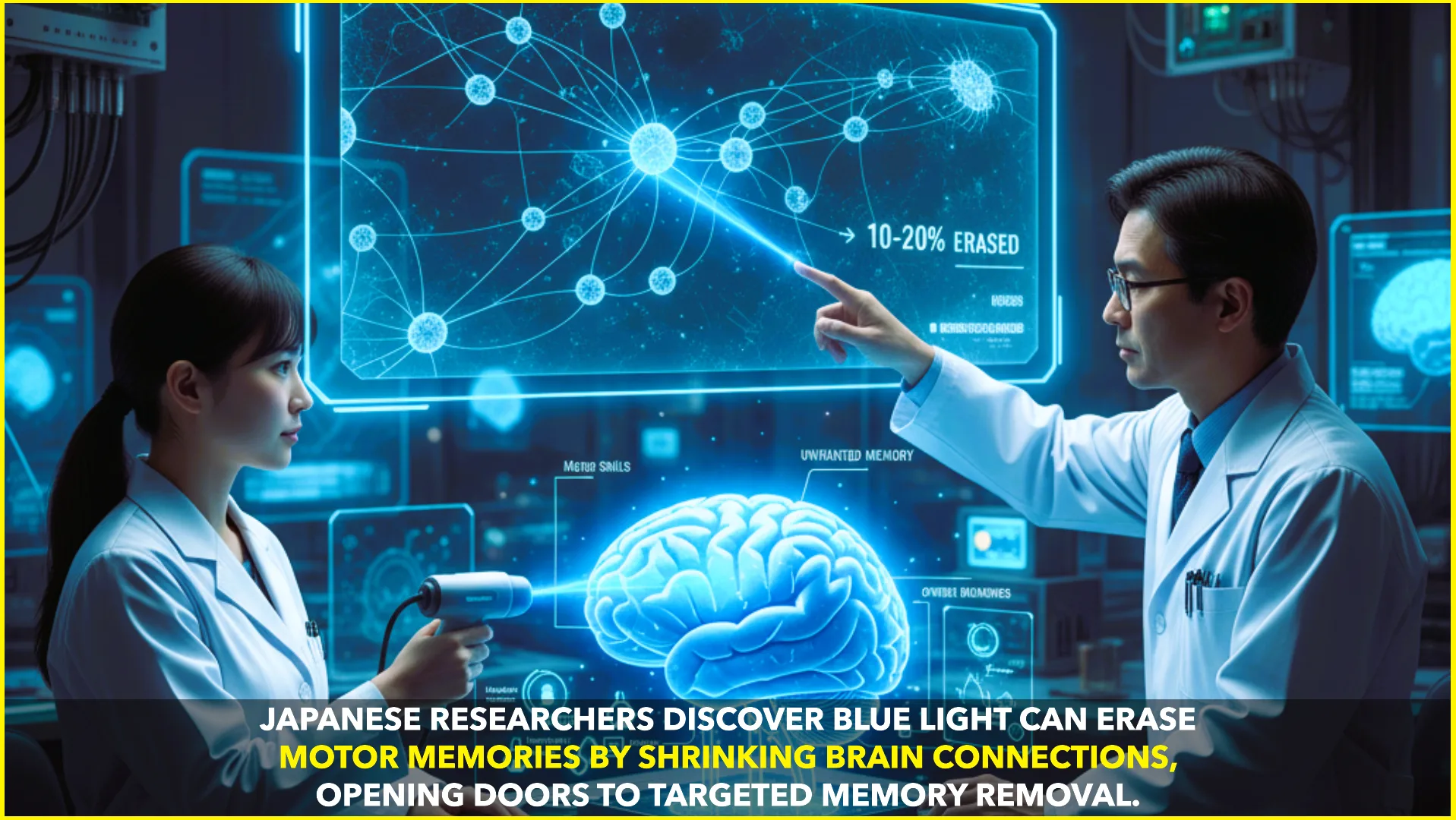Japanese researchers have made a groundbreaking discovery: shining blue light on the brain can weaken—or even erase—specific learned motor memories. The study, led by scientists at the University of Tokyo, showed that when the laser was directed at targeted brain connections, the tiny “memory” spines shrank, causing the training effect to disappear in about 10–20% of nearby neurons (The Independent, University of Tokyo).
How the Discovery Works
The team developed a special genetic probe that attaches itself to synaptic spines—microscopic structures in neurons where memories are stored. When exposed to blue laser light, the probe triggers these spines to shrink. Since dendritic spines are known to form or enlarge during learning, shrinking them effectively erases the newly formed memory trace (ScienceAlert).
In their experiments on mice, the researchers showed that this targeted shrinking erased a specific motor skill memory, while leaving other memories intact. Unlike drugs or brain damage, which can wipe out large networks of connections, this method can selectively erase a single memory out of thousands.
A Precision Tool for Memory
According to the University of Tokyo’s report, the method is so precise that it can target “hundreds of thousands of synapses” tied to just one memory without harming others. This is a significant leap forward in neuroscience, as it suggests that memories might be editable with almost surgical accuracy (University of Tokyo).
Why It Matters
- Medical Potential: If developed further, this approach could help people struggling with conditions like post-traumatic stress disorder (PTSD) by erasing harmful traumatic memories while preserving healthy ones.
- Research Tool: For scientists, this offers a way to study exactly how individual memories are stored and retrieved in the brain.
- Ethical Questions: Erasing memories raises difficult questions about identity, autonomy, and potential misuse. Experts caution that this discovery, while promising, needs careful regulation.
What Scientists Are Saying
Lead author Haruo Kasai from the University of Tokyo noted that the technology shows “a potential way to erase only selected memories with minimal side effects.” However, he also emphasized that human brains are far more complex than those of mice, and translating this research into clinical use will require years of testing (The Independent).
Other neuroscientists see the technique as a powerful tool for research. By being able to “switch off” a single memory, scientists can better understand how the brain links learning, habits, and long-term storage.
Limitations and Next Steps
- The technique has so far only been tested in mice, not humans.
- Human applications would require safe methods of delivering both the genetic probe and laser light into the brain.
- Ethical boards will likely debate how, when, and why such technology should be used.
Still, the breakthrough offers a glimpse of what might be possible in the future. If successful in humans, this could mean treating trauma without drugs, breaking addictions without relapse, or even fine-tuning learning for rehabilitation.
Conclusion
Japanese researchers have shown that it is possible to use blue light lasers to erase specific motor memories with incredible precision. While still in its early stages, the discovery could revolutionize how we treat mental health disorders and understand memory itself.
For now, it remains a powerful research tool—but one that might one day bring the science-fiction idea of memory erasure into reality.
Sources:










